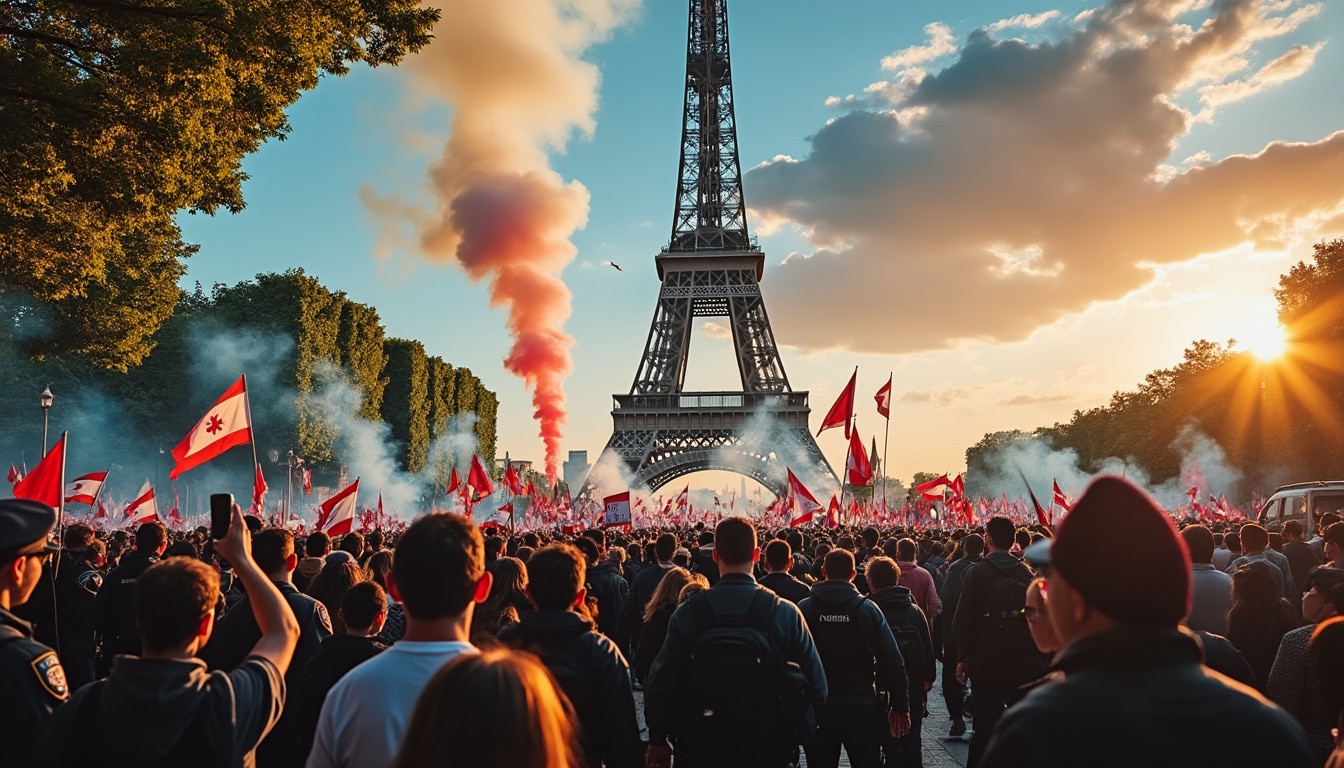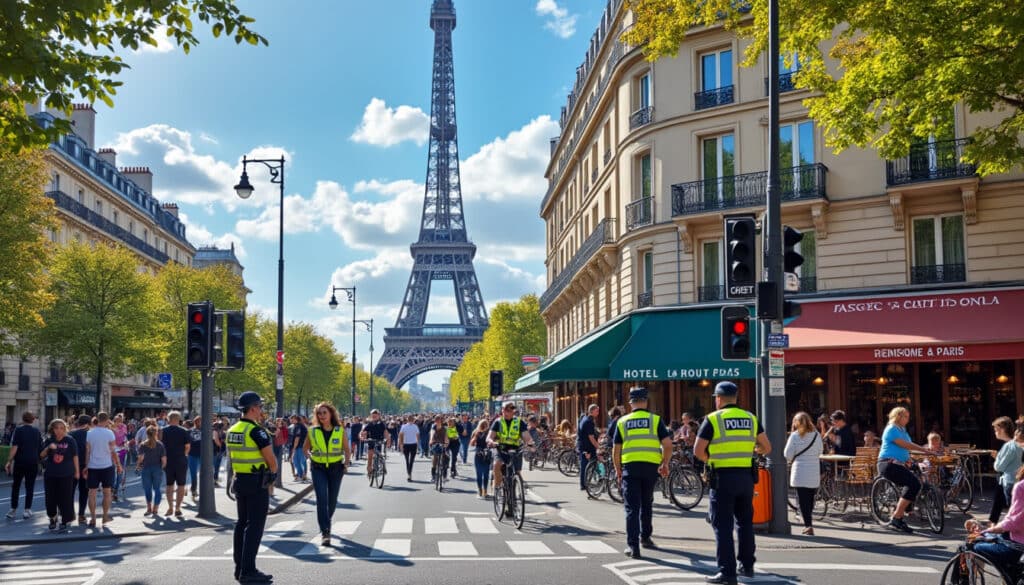Paris, a city renowned for its art, culture, and history, is also no stranger to protests and social unrest. The early months of 2025 have seen the city engulfed in a wave of demonstrations, capturing the world’s attention with scenes reminiscent of historic uprisings. Sparked by governmental reforms and ignited by the diverse voices of citizens, the streets of Paris have become a battleground for change, echoing with chants for justice and equality.
The Legacy of Protests in Paris: A Historical Perspective
The spirit of protest is woven into the very fabric of Parisian identity, harking back to monumental events like the French Revolution. The notion of “Liberté, égalité, fraternité” resonates in the protests, embodying a legacy that continues to inspire activists today. However, these iconic values are constantly tested by contemporary socio-political challenges.
Perhaps no past event parallels the recent unrest more than the gillet jaunes, or yellow vest movement, which erupted in late 2018. Initially triggered by rising fuel prices, this movement evolved into a broader populist outcry against President Macron’s centrist, technocratic government. The demands of the yellow vests grew in scale, calling for increased fiscal equality and challenging neoliberal policies.
Fast forward to 2025, Paris is again besieged by protests, this time in response to a controversial pension reform set forth by the government. The reform has sparked anger across different demographics, from public-sector workers to students, painting a portrait of collective discontent. The echoes of the past are unmistakable, as is the cry for a government that listens and adapts.
In 1968, another infamous year of protests, students and workers joined forces, challenging societal norms and demanding reforms. This historic moment marked a turning point, influencing French politics and culture for decades. Paris has been a witness and a stage for these historic potboilers, setting precedents that resonate to this day.
- 🎨 Rich cultural history intertwined with protest
- 📜 1968: A pivotal social movement year
- 🟡 Yellow vests movement as a contemporary parallel
The lessons of history weigh heavily in present-day Paris, where each protestor, banner, and chant seems to draw inspiration from those who marched before them. The grand Pont Neuf, the romantic banks of the Seine, and even the bustling Gare du Lyon have felt the tremors of civic unrest, illustrating the enduring connection between Paris’s storied past and its ever-evolving present.

The Government’s Role in Stirring Unrest: Recent Reforms And Public Reaction
Recent governmental reforms, particularly Pension Age Reforms, have been at the heart of the unrest in Paris. These reforms, championed by President Emmanuel Macron’s administration, propose raising the retirement age, a move widely unpopular among citizens. As Macron pushed through these changes via Article 49.3 of the Constitution—allowing legislation without a parliamentary vote—the population’s patience wore thin.
Prime Minister Elisabeth Borne’s announcement of the reforms was met with immediate backlash. Protests erupted in Place de la Concorde, as citizens gathered to voice their opposition. The nocturnal gatherings expanded rapidly, consuming streets, rail stations, and the bucolic cafes that dot the city.
A prominent focus of criticism is that these reforms disproportionately affect public-sector workers, already burdened by financial constraints. Leaders from prominent labor unions, such as the CGT and CFDT, have called for ongoing strikes, viewing the reforms as an attack on workers’ rights and dignity.
- 💼 Unpopular raise in retirement age sparks dissent
- 🏛️ Article 49.3 utilized to bypass parliamentary vote
- 💬 Unions lead a crusade for workers’ rights
The visibility of these protests reached a global audience, highlighting the symbolic power of Paris as a beacon for not only resistance but potential policy re-evaluation. In this environment, even the mundane becomes a symbol; garbage piles up in streets as sanitation workers went on strike, further complicating daily life and showcasing public frustration.
Economic Impacts on Tourism and Local Businesses
The economic ramifications of these protests are palpable. Paris, a magnet for tourists from around the world, has seen its charm somewhat overshadowed by the present turmoil. However, the city’s allure remains strong, with tour operators like Doris Arseguel navigating visitors through the chaos, reminding them of Paris’s enduring beauty.
Fashion brands like Nike, Adidas, and The North Face continue to attract crowds, although the typically vibrant shopping districts wear a cloak of tension. Even the high-end boutiques of the Le Marais district reflect a city at odds with itself, where signs of prosperity linger alongside those of protest.
While tourists may tread carefully amid barricades, they remain captivated by the city’s historical allure. The resilience of both the locals and the tourism sector ensures that cafes still buzz with conversation—proof of Paris’s enduring, albeit slightly altered, heartbeat.
Youth Engagement: The Role of Students in the 2025 Protests
One of the most captivating elements of recent protests is the role played by Parisian youth, particularly students. Young voices have emerged as powerful agents of change, challenging governmental policies and demanding to be heard. Their involvement in protests introduces a vital dynamic, balancing youthful exuberance with serious socio-political advocacy.
The prestigious Lycée Henri-IV stands as a significant hotbed of protest. Students as young as 16 have taken to the streets, demonstratively blocking their school’s entrance and chanting for more inclusive governance. As youth like Emma Mendzesel and Soren Lafarge rally their peers, their calls for a more participative democracy resonate across generations.
Their unique perspective highlights several key concerns:
- 🗣️ Desire for participation in decision-making processes
- 📖 Impact of prolonged work life on future opportunities
- 🔍 Advocacy for educational reforms to align with job market demands
This new generation of activists complements the voices of seasoned marchers, illustrating a cohesive movement that spans age and experience. As their banners flutter alongside those of veteran protestors, these young citizens breathe new life into a Gregorian chant for change—a reminder that the future is very much a part of today’s conversation.
The Impact of Social Movements on Governance and Policy
How have these recent demonstrations impacted governance and policy in France? Historically, large-scale protests have the power to influence societal norms and even catalyze governmental change. The 2025 protests are seen as a crucial moment in this ongoing narrative, forcing policymakers to confront public dissatisfaction.
Historically, concessions have often followed prolonged unrest in France. Whether these current protests will achieve similar results is still up for debate. However, they are significant for several reasons:
- ⚖️ Highlighting public resistance against unpopular policies
- 🤝 Encouraging dialogue between government and constituents
- 🔄 Potentially influencing future policy direction
The government faces a critical test in balancing the needs of its citizens with the demands of economic reform. Worldwide, observers scrutinize the unfolding events, hoping for a resolution that maintains France’s storied commitment to democracy and social equity.
| Sector | Impact | Action Taken |
|---|---|---|
| Public Sector | Strikes and Walkouts | Negotiations Ongoing |
| Fashion | Decreased Foot Traffic | Online Promotions |
| Tourism | Disrupted Tours | Enhanced Tour Packages |
| Education | School Protests | Governmental Meetings |
FAQ on Paris’s Current Protests
What sparked the protests in Paris in 2025?
The primary cause was the controversial pension reform proposed by the government, which angered a wide demographic including public-sector workers and the youth.
Are there any historical precedents for these types of protests?
Yes, France has a long history of protests that includes the French Revolution and the 1968 student movements, as well as the 2018 yellow vests protests.
How are the protests affecting tourism?
While tourism has been impacted, with certain attractions being less accessible, Paris’s allure continues to draw visitors eager to experience its cultural heritage.
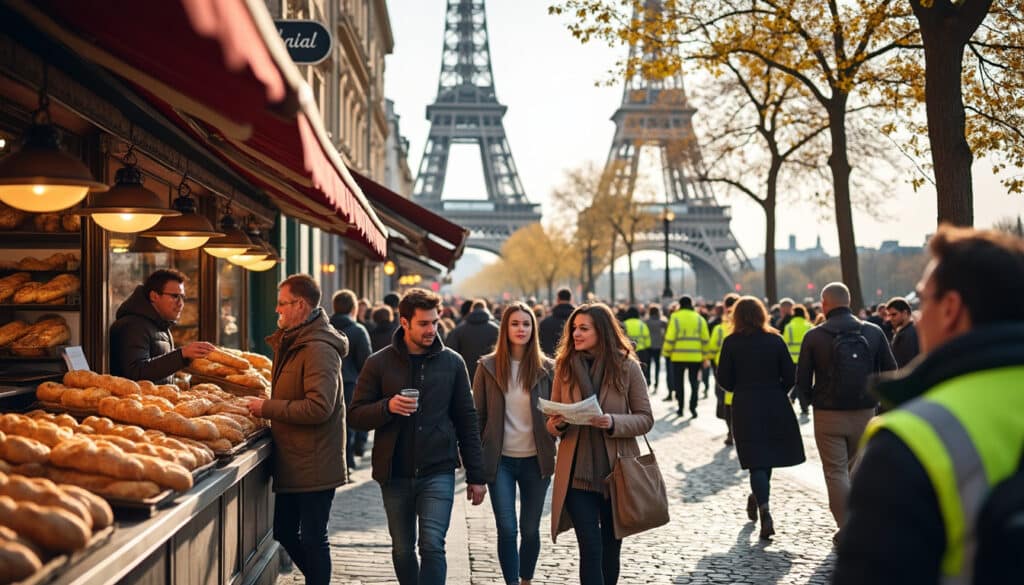
Paris, the enchanting “City of Light,” is a beacon of culture, romance, and history that captivates travelers from around the globe. As the city prepares to welcome tourists in 2025 after hosting the illustrious 2024 Olympics, safety remains a top…
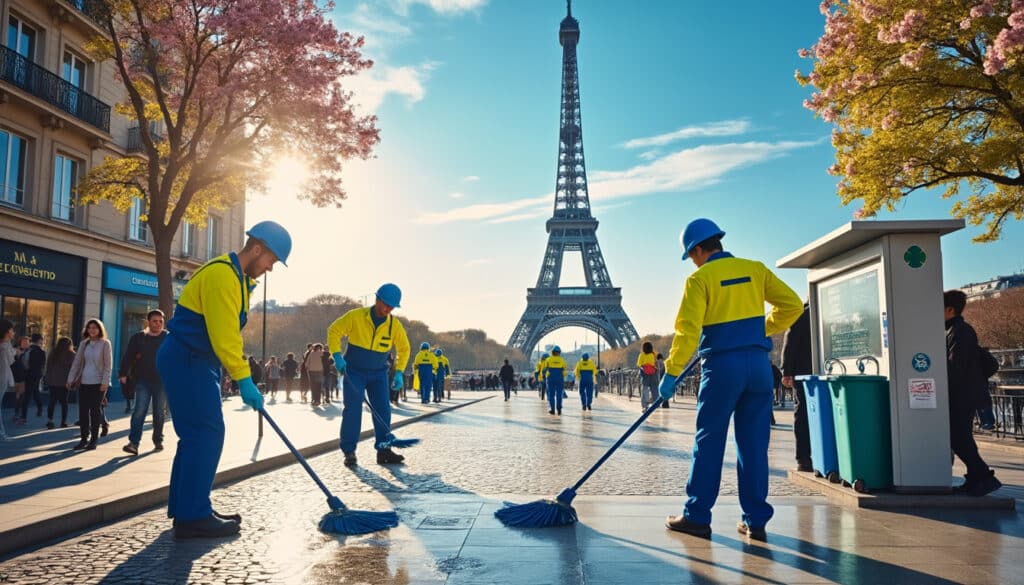
Cleanliness and hygiene in Paris
Paris, a city renowned for its romance, art, and culinary delights, presents a unique juxtaposition when it comes to cleanliness and hygiene. While some travelers might revel in the city’s history and charm, others express concerns about its sanitation. Understanding…

Pickpocketing and theft in Paris
Paris, with its stunning architecture, rich history, and vibrant culture, remains a top destination for travelers worldwide. However, like many bustling tourist spots, it is also a hotspot for pickpocketing and theft. While the romantic allure and the aroma of…
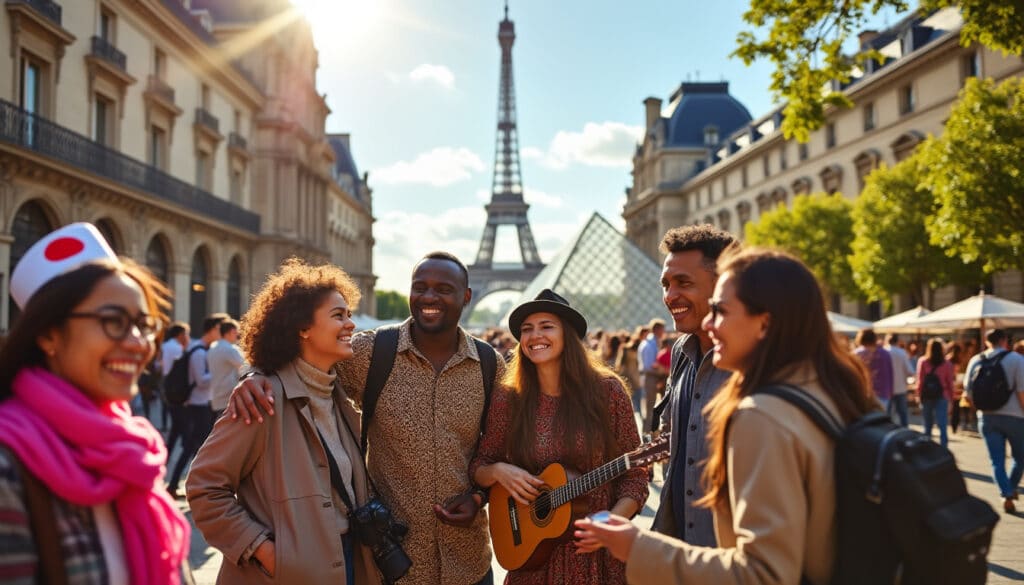
Safety in Paris for travelers from different countries
Are you planning a trip to the dazzling City of Lights and wondering about its safety? Paris, a city synonymous with culture, art, and gastronomy, holds an irresistible allure for travelers across the globe. Yet, like any major metropolis, understanding…

